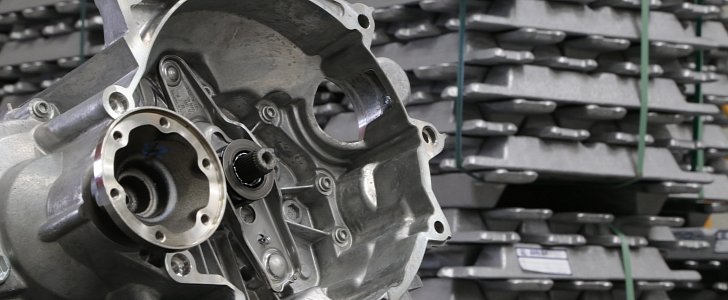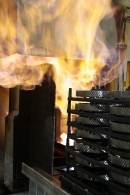Back in February, SEAT announced it had won the contract to produce a new transmission for the Volkswagen Group. The cog swapper in question is called MQ281, a manual transmission that was developed exclusively for vehicles based on the MQB platform.
Built by SEAT Components in El Prat de Llobregat, Spain, the MQ281 will be used by the Volkswagen Passat, among many other nameplates. With the help of POV cameras installed at different stages of the process, the Spanish automaker intends to showcase what it takes to produce this gearbox.
SEAT prides itself on producing a transmission every 27 seconds at the Spanish plant, which makes for a huge volume when you think how many seconds are there in a workday. In 2016, for example, SEAT Components manufactured a total of 661,277 transmissions. The figure is expected to increase this year. Until 2019, production is said to reach 800,000 units.
In the first instance, ingots of aluminum are loaded into kilns for melting at 700 degrees Celsius. Following this process, injection molding machines solidify the aluminum into a rough part in 20 seconds. Some of the components then undergo heat treatment at a temperature of 900 degrees Celsius for up to 14 hours. This is needed to ensure service life, which SEAT estimates to be roughly 250,000 kilometers (155,350 miles) on average.
Including shafts, gearwheels, and timing mechanisms, each transmission consists of 174 components. What’s more, the Spanish automaker is adamant that approximately 95 percent of the leftover aluminum gets recycled for use.
SEAT Components uses 15,000 tonnes of aluminum every year, a figure that equates to the construction of 220 commercial airliners. Other than El Prat de Llobregat, the Volkswagen Group has eight other locations where trannies are produced. In no particular order, these are Kassel in Germany, Mlada Boleslav and Vrchlabi in the Czech Republic, Cordoba in Argentina, and four facilities in the People's Republic of China (Anting, Dalian, Tianjin, Changchun).
SEAT prides itself on producing a transmission every 27 seconds at the Spanish plant, which makes for a huge volume when you think how many seconds are there in a workday. In 2016, for example, SEAT Components manufactured a total of 661,277 transmissions. The figure is expected to increase this year. Until 2019, production is said to reach 800,000 units.
In the first instance, ingots of aluminum are loaded into kilns for melting at 700 degrees Celsius. Following this process, injection molding machines solidify the aluminum into a rough part in 20 seconds. Some of the components then undergo heat treatment at a temperature of 900 degrees Celsius for up to 14 hours. This is needed to ensure service life, which SEAT estimates to be roughly 250,000 kilometers (155,350 miles) on average.
Including shafts, gearwheels, and timing mechanisms, each transmission consists of 174 components. What’s more, the Spanish automaker is adamant that approximately 95 percent of the leftover aluminum gets recycled for use.
SEAT Components uses 15,000 tonnes of aluminum every year, a figure that equates to the construction of 220 commercial airliners. Other than El Prat de Llobregat, the Volkswagen Group has eight other locations where trannies are produced. In no particular order, these are Kassel in Germany, Mlada Boleslav and Vrchlabi in the Czech Republic, Cordoba in Argentina, and four facilities in the People's Republic of China (Anting, Dalian, Tianjin, Changchun).









